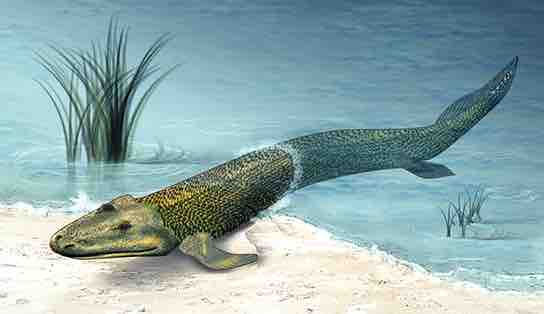Characteristics of Amphibians
As tetrapods, most amphibians are characterized by four well-developed limbs. Some species of salamanders and all caecilians are functionally limbless; their limbs are vestigial. An important characteristic of extant amphibians is a moist, permeable skin that is achieved via mucus glands that keep the skin moist; thus, exchange of oxygen and carbon dioxide with the environment can take place through it (cutaneous respiration). Additional characteristics of amphibians include pedicellate teeth (teeth in which the root and crown are calcified, separated by a zone of noncalcified tissue) and a papilla amphibiorum and papilla basilaris (structures of the inner ear that are sensitive to frequencies below and above 10,00 hertz, respectively). Amphibians also have an auricular operculum, which is an extra bone in the ear that transmits sounds to the inner ear. All extant adult amphibians are carnivorous. Some terrestrial amphibians have a sticky tongue that is used to capture prey.
Evolution of Amphibians
The fossil record provides evidence of the first tetrapods: now-extinct amphibian species dating to nearly 400 million years ago. Evolution of tetrapods from fishes represented a significant change in body plan from one suited to organisms that respired and swam in water, to organisms that breathed air and moved onto land. These changes occurred over a span of 50 million years during the Devonian period. One of the earliest known tetrapods is from the genus Acanthostega. Acanthostega was aquatic; fossils show that it had gills similar to fishes. However, it also had four limbs, with the skeletal structure of limbs found in present-day tetrapods, including amphibians. Therefore, it is thought that Acanthostega lived in shallow waters and was an intermediate form between lobe-finned fishes and early, fully terrestrial tetrapods. What preceded Acanthostega?
In 2006, researchers published news of their discovery of a fossil of a "tetrapod-like fish," Tiktaalik roseae, which seems to be an intermediate form between fishes having fins and tetrapods having limbs . Tiktaalik probably lived in a shallow water environment about 375 million years ago.

Tiktaalik roseae
The recent fossil discovery of Tiktaalik roseae suggests evidence for an animal intermediate to finned fish and legged tetrapods.
The early tetrapods that moved onto land had access to new nutrient sources and relatively few predators. This led to the widespread distribution of tetrapods during the early Carboniferous period: sometimes called the "Age of the Amphibians."